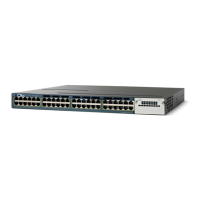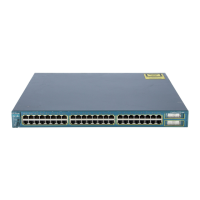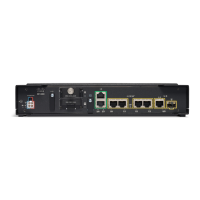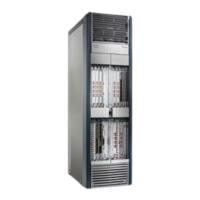1-13
Catalyst 3750-X and 3560-X Switch Software Configuration Guide
OL-25303-03
Chapter 1 Configuring STP
Configuring Spanning-Tree Features
• If a neighboring switch external to the switch stack fails or is powered down, normal spanning-tree
processing occurs. Spanning-tree reconvergence might occur as a result of losing a switch in the
active topology.
• If a new switch external to the switch stack is added to the network, normal spanning-tree processing
occurs. Spanning-tree reconvergence might occur as a result of adding a switch in the network.
For more information about switch stacks, see Chapter 1, “Managing Switch Stacks.”
Configuring Spanning-Tree Features
These sections contain this configuration information:
• Default Spanning-Tree Configuration, page 1-13
• Spanning-Tree Configuration Guidelines, page 1-14
• Changing the Spanning-Tree Mode., page 1-15 (required)
• Disabling Spanning Tree, page 1-16 (optional)
• Configuring the Root Switch, page 1-17 (optional)
• Configuring a Secondary Root Switch, page 1-18 (optional)
• Configuring Port Priority, page 1-19 (optional)
• Configuring Path Cost, page 1-21 (optional)
• Configuring the Switch Priority of a VLAN, page 1-22 (optional)
• Configuring Spanning-Tree Timers, page 1-23 (optional)
Default Spanning-Tree Configuration
Table 1-3 shows the default spanning-tree configuration.
Table 1-3 Default Spanning-Tree Configuration
Feature Default Setting
Enable state Enabled on VLAN 1.
For more information, see the “Supported
Spanning-Tree Instances” section on
page 1-10.
Spanning-tree mode PVST+. (Rapid PVST+ and MSTP are
disabled.)
Switch priority 32768.
Spanning-tree port priority (configurable on a per-interface basis) 128.
Spanning-tree port cost (configurable on a per-interface basis) 1000 Mb/s: 4.
100 Mb/s: 19.
10 Mb/s: 100.
Spanning-tree VLAN port priority (configurable on a per-VLAN basis) 128.

